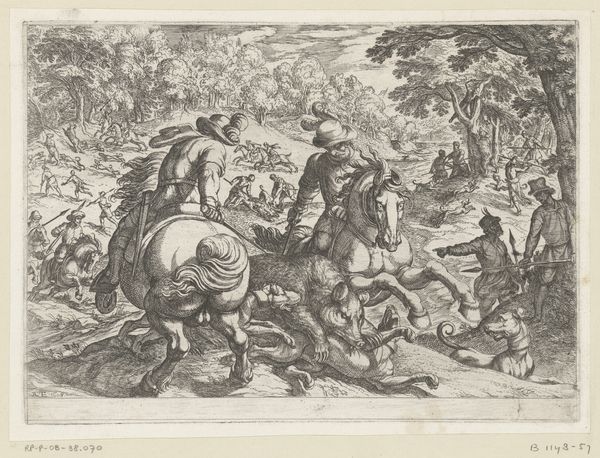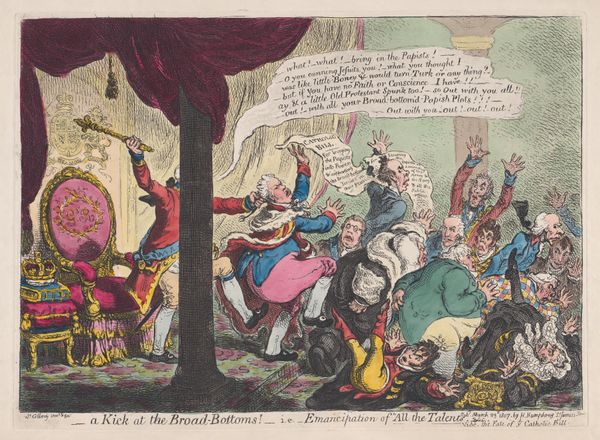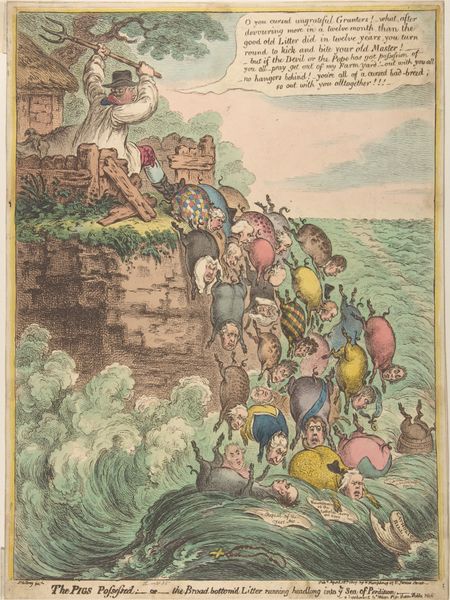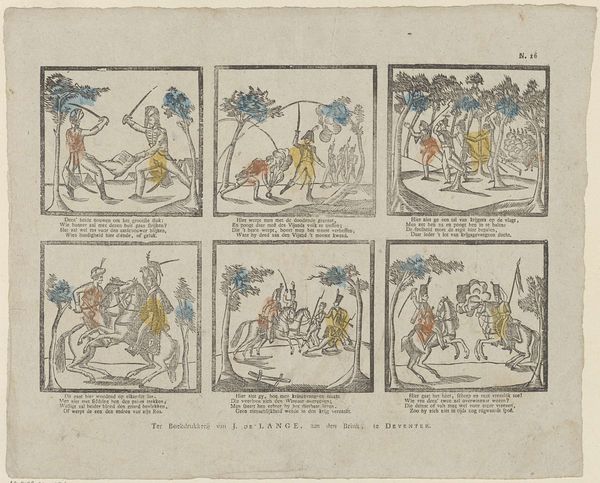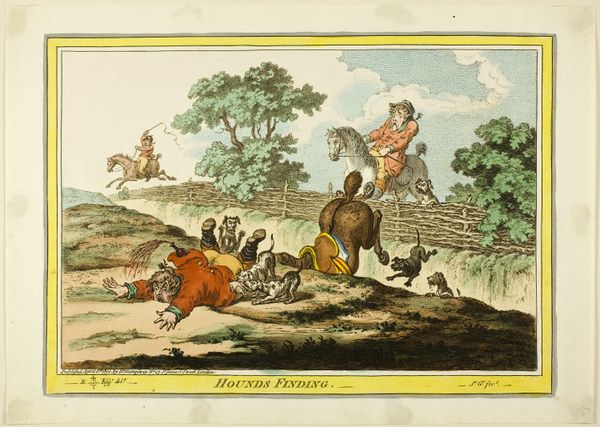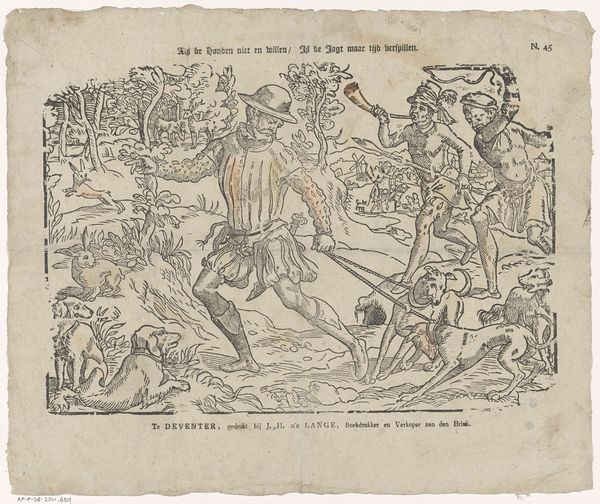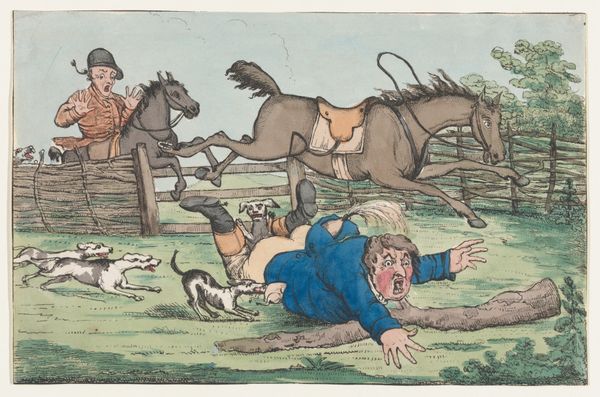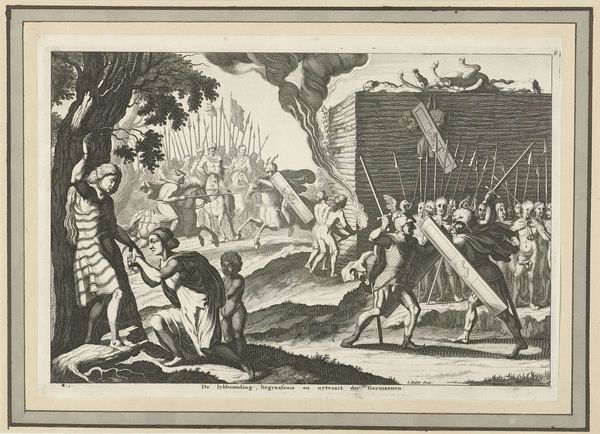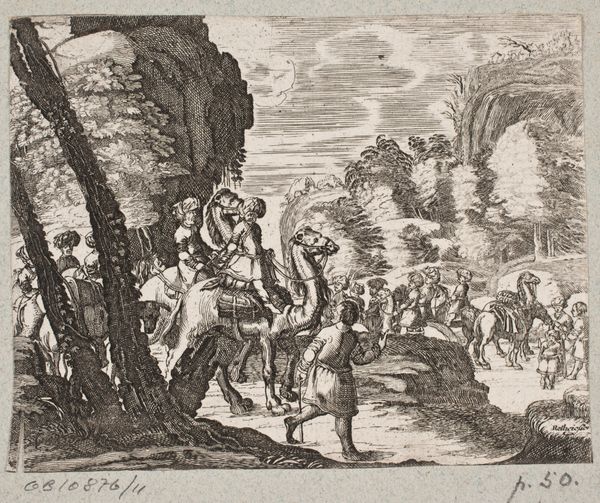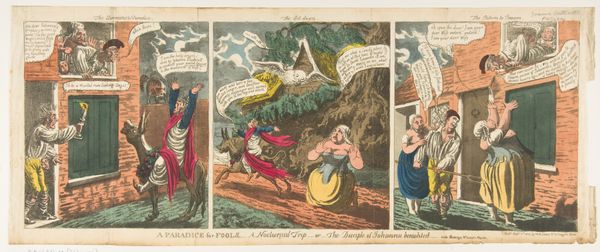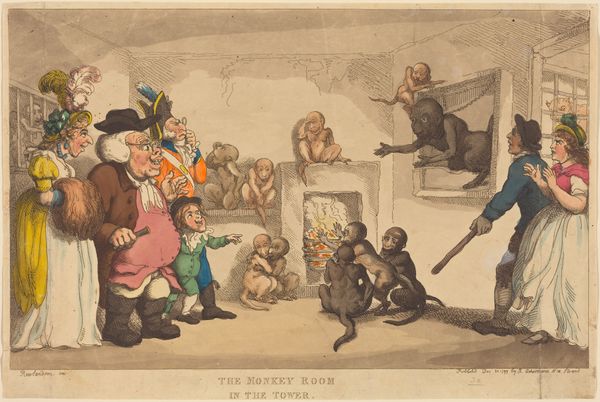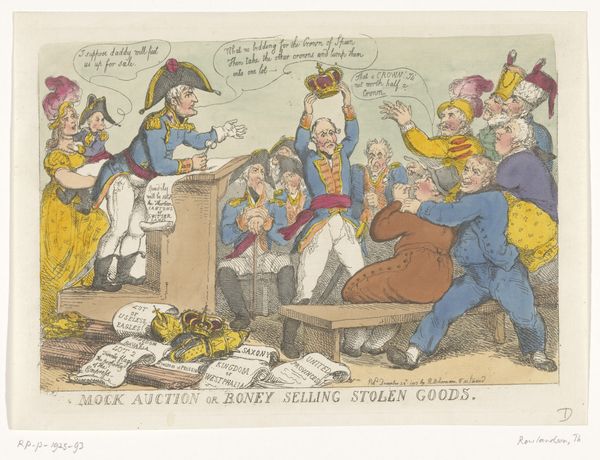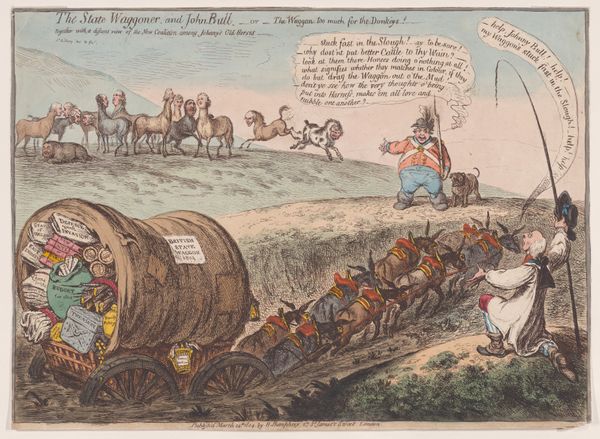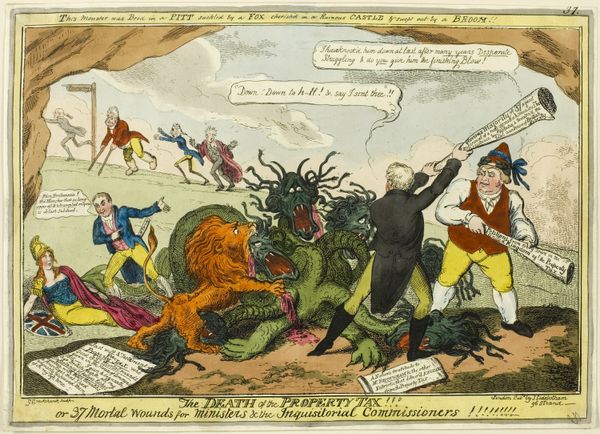
"More Pigs Than Teats",–or–the New Litter of Hungry Grunters, Sucking John-Bull's-Old-Sow to Death 1806
0:00
0:00
drawing, print
#
drawing
# print
#
caricature
#
romanticism
#
genre-painting
#
history-painting
Dimensions: sheet (clipped impression, inlaid): 9 5/8 x 13 5/8 in. (24.4 x 34.6 cm)
Copyright: Public Domain
Curator: This is "More Pigs Than Teats" by James Gillray, created in 1806. Gillray was a prominent British caricaturist, and this print offers a scathing commentary on the political landscape of the time. Editor: My first impression? Absolute chaos! There's a crowded composition with dozens of these grotesque pig-creatures all vying for something...the overall mood is unsettling, with a frantic energy that almost feels desperate. Curator: Gillray often used his art to satirize political figures and events. The title itself, "...the New Litter of Hungry Grunters, Sucking John-Bull's-Old-Sow to Death," reveals his allegorical intent. "John Bull" was a personification of England, and the sow likely represents the nation being drained by greedy politicians and war profiteers, here symbolized as pigs. Editor: Absolutely. Look closely, and you'll notice that each pig has a human face. This brings up questions about how caricatures were created in that period. What processes – printing, etching – did Gillray use? These methods informed the kind of social critique that was possible back then, and whom it could reach. Also notice the texture—the etched lines almost writhe on the page! Curator: That texture contributes significantly to the image's raw, visceral impact. Gillray’s visual language was powerful and appealed to a broad audience. He was effectively shaping public opinion through imagery, participating in a robust political discourse outside of traditional government channels. Think of it: prints like these helped create and solidify perceptions, impacting elections and policy debates. Editor: For sure. Plus, there is something about the act of distribution—that his pieces would circulate widely in taverns, coffeehouses, and homes—meant the art reached social classes who may have been disenfranchised at this time. They could own these items; it empowered them to join this kind of cultural conversation. Curator: And let’s consider the lasting legacy of such works. Gillray’s style influenced generations of political cartoonists, and his work provides invaluable insights into the socio-political anxieties of early 19th-century Britain. Editor: Definitely, the deliberate process involved highlights a sharp political message. Today, this piece challenges us to reflect on how the means of production have shaped socio-political criticism.
Comments
No comments
Be the first to comment and join the conversation on the ultimate creative platform.
